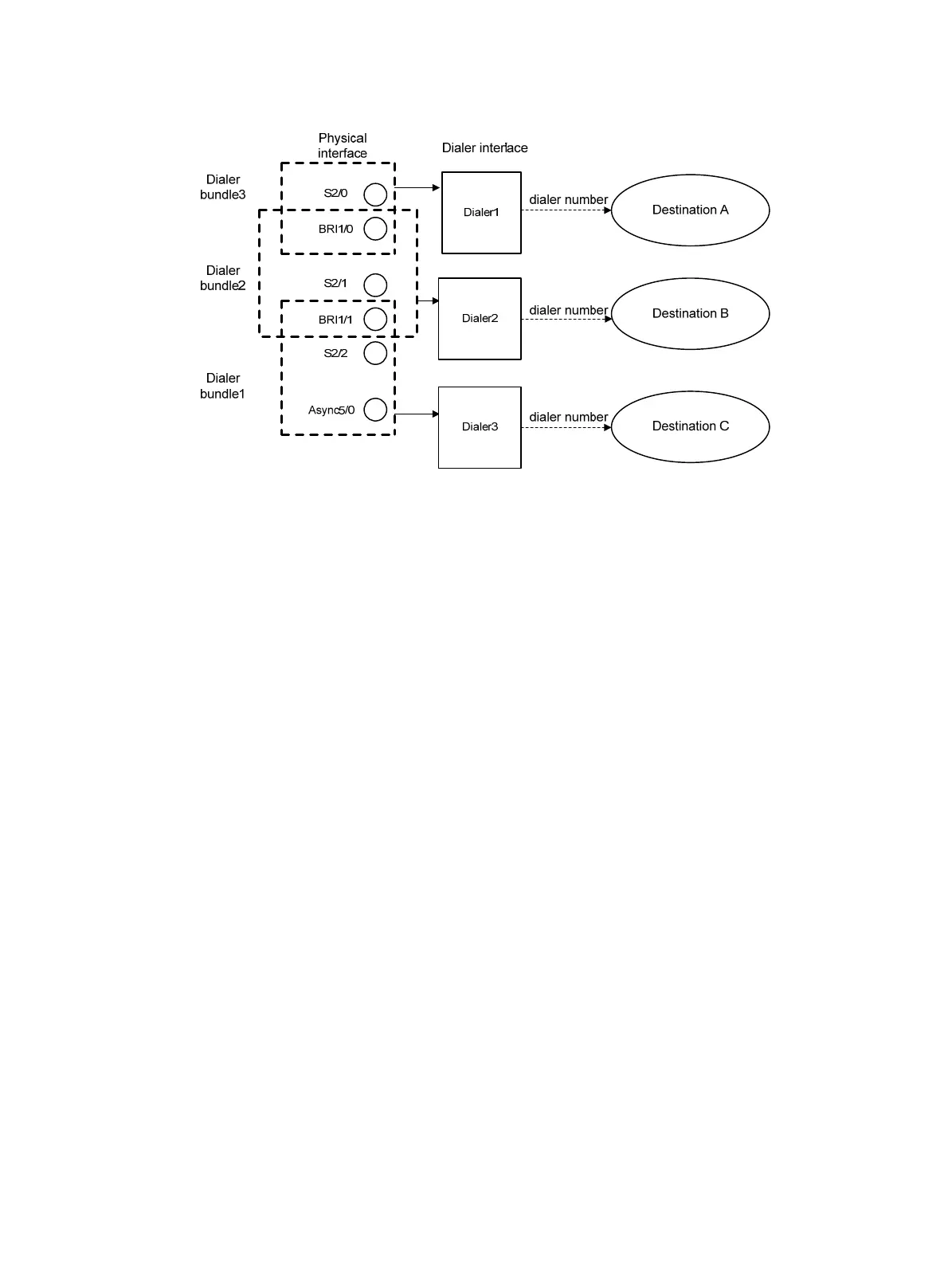125
Figure 39 Association of physical interfaces, dialer bundles, and dialer interfaces
In Figure 39, a physical interface can be assigned to multiple dialer bundles and serve multiple
dialer interfaces, but each dialer interface can use only one dialer bundle and configured with
one dial string. The physical interfaces in a dialer bundle can be assigned different priorities.
In the figure, interface Dialer2 uses dialer bundle 2, which contains physical interfaces BRI 1/0,
BRI 1/1, and Serial 2/1. Suppose BRI 1/0 is assigned the priority of 100, BRI 1/1 the priority of
50, and Serial 2/1 the priority of 75. Because BRI 1/0 has a higher priority over BRI 1/1 and
Serial 2/1, it will be preferred when Dialer2 places a call.
DCC features
Basic DCC features
Basic DCC offers the following features:
• Supporting a wide range of dialup interfaces, such as synchronous/asynchronous serial
interface, AUX port, ISDN BRI or PRI interface, and AM interface to accommodate to different
networking requirements.
• Supporting link layer protocol PPP.
• Supporting IP on dialup interfaces.
• Supporting dynamic routing protocols, such as RIP and OSPF, on dialup interfaces.
• Providing flexible dialup interface backup.
• Allowing you to manage different modems on the user interface.
Callback through DCC
In callback, the called party originates a return call to the calling party. The calling party is the client
and the called party is the server. The callback client originates a call first, and the callback server
decides whether to originate a return call. If a callback is needed, the server will immediately
disconnect and originate a return call.
DCC callback offers the following benefits:
• Enhanced security—When placing a return call, the server dials the calling number configured
at the local end. This prevents the insecurity resulting from username and password
compromise.
